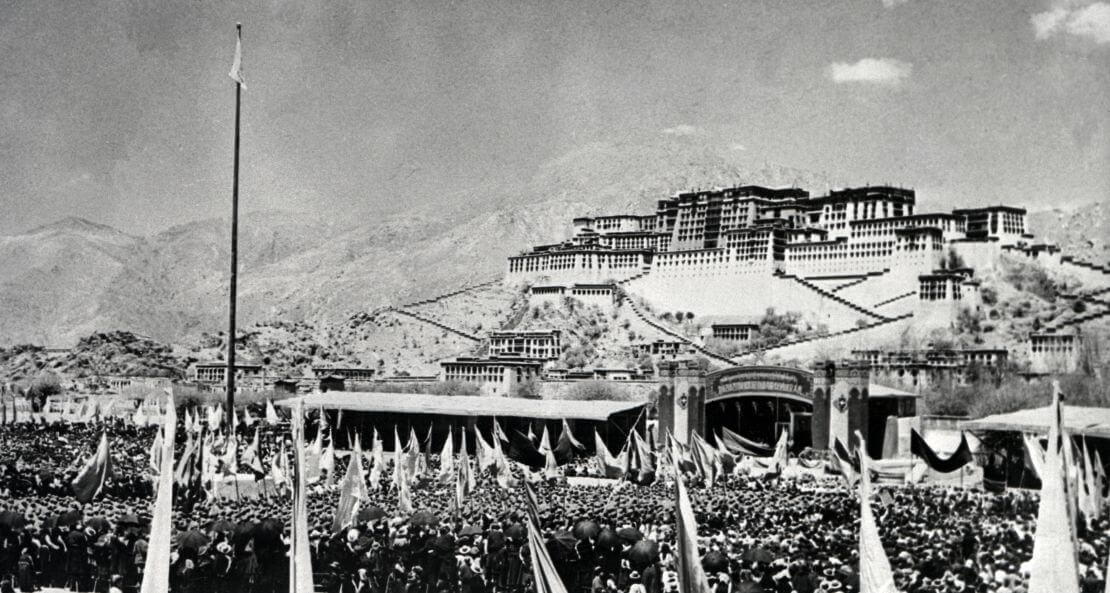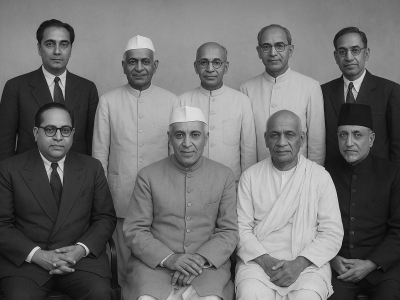Future of Tibet: A Geopolitical Prize or Price for Peace

Tibet, often dubbed the 'Roof of the World', is a region of immense cultural, historical, and strategic importance. Nestled high in the Himalayas, Tibet's unique social and political landscape offers a rich ground for examining how societies and individuals evolve under extraordinary circumstances. Additionally, Tibet's geopolitical significance places it at the heart of a strategic tug of war between India and China, both vying for influence and control. This article explores Tibet's role in social and political evolution and examines the ongoing India-China rivalry over this critical region.
Social and Political Evolution in Tibet
Tibet's unique sociopolitical context provides a fascinating case study in how societies and individuals evolve under distinctive conditions:
Cultural Resilience and Adaptation: Despite decades of external influence and political control, Tibetan culture has shown remarkable resilience. The persistence of Tibetan Buddhism, traditional practices, and language highlights the community's ability to adapt while maintaining core cultural values. This resilience is a testament to the strength and adaptability of Tibetan society.
Exile and Diaspora Dynamics: The Tibetan diaspora, particularly in India, has created a vibrant community in exile. The establishment of the Tibetan government-in-exile and institutions such as the Tibetan Children's Villages showcase the evolution of Tibetan social and political structures outside their homeland. This diaspora has played a crucial role in preserving Tibetan identity and advocating for Tibet's political cause on the global stage.
Individual Empowerment: Tibetan society has seen significant changes at the individual level, especially in education and gender roles. Access to education and the empowerment of women have led to shifts in traditional roles and the emergence of new leaders and thinkers within the community.
Political Activism and Human Rights: The political activism of Tibetans, both within Tibet and in the diaspora, has evolved significantly. The non-violent resistance led by figures like the Dalai Lama has inspired global movements for human rights and self-determination. Tibetan activists continue to advocate for their rights, using modern tools of communication and diplomacy.
Geopolitical Importance of Tibet
Tibet's strategic location and its resources make it a significant region for both India and China:
Strategic Buffer Zone: For China, Tibet serves as a crucial buffer against India. The control over this vast, mountainous region enhances China's strategic depth and provides a defensive advantage.
Water Resources: Tibet is the source of major rivers such as the Brahmaputra, which are vital for the water security of billions in South Asia. Control over these water resources is a significant strategic asset.
Military Significance: Tibet's high altitude offers strategic military advantages, including observation points and missile deployment sites. Both India and China have vested interests in maintaining strong military positions in and around Tibet.
Cultural Influence: Tibet holds significant cultural and religious importance, especially for Buddhism. China's control over Tibet allows it to exert cultural influence and manage religious movements that could pose a challenge to its authority.
Beyond Cold War: Indo-Sino Tug of War Over Tibet
The strategic rivalry between India and China over Tibet involves multiple dimensions:
Border Disputes: The longstanding border disputes, particularly in regions like Arunachal Pradesh and Aksai Chin, underscore the strategic significance of Tibet. The 1962 Sino-Indian War and subsequent skirmishes highlight ongoing tensions.
Diplomatic Maneuvering: Tibet's status and the presence of the Dalai Lama in India are sensitive issues. China's diplomatic efforts to isolate the Dalai Lama and India's support for Tibetan refugees reflect their competing interests.
Economic Initiatives: China's Belt and Road Initiative (BRI) and India's Act East Policy illustrate their competing economic strategies. Infrastructure development in and around Tibet is part of broader efforts to enhance economic connectivity and influence.
Influence in Neighboring Regions: Both countries seek to extend their influence in neighboring countries like Nepal and Bhutan. Tibet's proximity to these regions makes it a strategic focal point for power projection.
Alternatively Towards a Shared Future: Tibet as a Conduit for India-China Cooperation
The region of Tibet, with its rich cultural heritage and strategic geopolitical importance, has long been a point of contention between India and China. However, envisioning a future where Tibet serves as a shared region under a cooperative framework between India and China could lead to enhanced bilateral relations, regional stability, and mutual benefits. This concept, though ambitious, could transform the political landscape of South Asia and set a precedent for resolving territorial disputes globally.
The Vision of a Shared State
A shared state model for Tibet involves collaborative governance where both India and China contribute to the administration, development, and preservation of the region. This approach requires careful negotiation, mutual trust, and a commitment to peaceful coexistence. Here are the potential pathways and benefits of such an arrangement:
Bilateral Governance Council: Establish a joint council comprising representatives from both India and China to oversee Tibet's administration. This council would be responsible for policy-making, economic development, and cultural preservation, ensuring that the interests of both nations are addressed.
Economic Collaboration: Joint investment in infrastructure, tourism, and sustainable development projects can lead to economic growth in Tibet. Shared economic interests can foster interdependence and reduce the likelihood of conflict.
Cultural Preservation and Exchange: Tibet's rich cultural heritage can be preserved and promoted through joint initiatives. Collaborative cultural festivals, educational exchange programs, and religious tourism can enhance mutual understanding and respect.
Environmental Stewardship: Both nations can work together on environmental conservation, focusing on preserving Tibet's unique ecosystem and addressing climate change impacts. Shared responsibility for natural resources, especially water, can prevent future conflicts over resource allocation.
Security Cooperation: Establishing a demilitarized zone and joint security protocols can reduce tensions and build trust. Regular joint military exercises and intelligence sharing can enhance regional security and stability.
Humanitarian Efforts: Collaborating on humanitarian issues, such as disaster relief and public health, can improve living conditions for Tibetans and demonstrate the positive impacts of shared governance.
Benefits of a Shared State
Enhanced Diplomatic Relations: A shared governance model can serve as a foundation for improved diplomatic ties between India and China, fostering a spirit of cooperation and dialogue.
Regional Stability: Reduced military tensions and a focus on joint development can lead to greater stability in the broader South Asian region.
Economic Growth: Joint investments and economic initiatives can boost Tibet's economy, benefiting both nations through increased trade and tourism.
Cultural Harmony: Promoting cultural exchange and understanding can mitigate ethnic and cultural tensions, fostering a more harmonious coexistence.
Global Precedent: Successfully implementing a shared state model for Tibet can set an example for resolving other territorial disputes around the world through cooperation and shared governance.
Challenges and Solutions
While the vision of a shared state for Tibet is promising, it is not without challenges. These include:
Sovereignty Concerns: Both India and China have strong nationalistic sentiments and concerns about sovereignty. Addressing these through transparent negotiations and legal frameworks that respect both nations' sovereignty is crucial.
Trust Deficit: Historical tensions and mistrust can hinder cooperation. Confidence-building measures, such as regular dialogue, joint projects, and people-to-people exchanges, can gradually build trust.
Local Autonomy: Ensuring that the Tibetan people have a significant role in the governance process is vital. Incorporating local leaders and communities in decision-making can enhance legitimacy and acceptance.
International Support: Gaining support from the international community, including the United Nations and regional organizations, can provide legitimacy and aid in implementing the shared governance model.
The concept of Tibet as a shared state between India and China represents a bold and innovative approach to resolving one of Asia's most complex geopolitical issues. By focusing on collaboration and mutual benefits, both nations can transform a historic point of contention into a model of cooperation and peace. While challenges exist, the potential rewards—enhanced relations, regional stability, and economic growth—make it a vision worth pursuing. Through shared governance, Tibet can become a bridge that unites India and China, paving the way for a more harmonious and prosperous future in South Asia.
The Urgency of Addressing Tibet's Future
Addressing the future of Tibet is a pressing issue that demands immediate attention due to its significant geopolitical implications and the potential for escalating tensions between India and China. The longstanding border disputes and military standoffs, such as the Doklam and Galwan Valley incidents, underscore the fragility of peace in the region. As both nations continue to expand their military capabilities and infrastructure in and around Tibet, the risk of accidental conflict increases, which could have devastating consequences for regional stability and global security. Early resolution and cooperative management of Tibet could prevent further deterioration of relations and lay the groundwork for sustainable peace.
Moreover, the environmental and socio-economic aspects of Tibet add to the urgency. Tibet is a critical water source for much of Asia, with its glaciers feeding major rivers that support billions of people. Climate change and environmental degradation threaten these vital resources, necessitating joint efforts for conservation and sustainable management. Additionally, the well-being of the Tibetan people, who have long been caught in the crossfire of geopolitical strife, must be prioritized. Addressing their needs through collaborative development projects and ensuring their cultural preservation can foster goodwill and stability. Delaying action only exacerbates these challenges, making a timely and proactive approach essential for the prosperity and security of the entire region
Tibet's significance goes beyond its breathtaking landscapes and spiritual heritage. It is a vital region for understanding the evolution of societies and individuals under unique circumstances. Simultaneously, it represents a strategic geopolitical prize, with India and China locked in a complex tug of war over its control and influence. Understanding Tibet's role in social and political evolution, along with its geopolitical stakes, is crucial for comprehending the broader dynamics of South Asian geopolitics. As the rivalry between India and China continues, the outcomes will shape the future of this pivotal region.









